


























Enjoy a more comfortable experience on the water with SeaStar Hydraulic Steering


Have full confidence when you take the helm, with knowledge that you have complete control of your vessel. SeaStar Pro by Dometic hydraulic steering systems, with options for most applications, ensure you will always have a safe and comfortable boating experience.
www.dometic.com



The hunt for the perfect outdoorsman knife is over. There’s only one tool you need: the Whitetail™ Hunting Knife—now ONLY $49!
The consummate outdoorsman never goes on deep woods hunting trips without the essentials. Not just the basics for every hunting trip, but the items he’s come to depend on over the years. Our new Whitetail™ Hunting Knife will quickly become your go-to blade for every expedition. The Whitetail™ is a premium fixed-blade hunting knife that’s perfect for skinning. With the Whitetail at hand, you’ll be ready for field dressing in only seconds, and you’ll never need a separate gut hook tool ever again. The Whitetail™ boasts a mighty 420 high carbon, full tang stainless steel blade, meaning the blade doesn’t stop at the handle, it runs the full length of the knife. According to Gear Patrol, a full tang blade is key, saying “A full tang lends structural strength to the knife, allowing for better leverage ...think one long steel beam versus two.” The comfortable handle is made from pakkawood—moisture-resistant and more durable than hardwood. If hunting is your life, then the Whitetail™ Knife was designed to make your life easier.
With our limited edition Whitetail™ Hunting Knife you’re getting the best in 21st-century construction with a classic look inspired by legendary American pioneers. What you won’t get is the trumped up price tag. We know a thing or two about the hunt–– like how to seek out and capture an outstanding, collector’s-quality knife that won’t cut into your bank account.
EXCLUSIVE FREE
Stauer® 8x21 Compact Binoculars

-a $99 valuewith purchase of Whitetail™ Hunting Knife




complete refund of the


What customers are saying about Stauer knives...


“Good value. Great looking. Sufficiently sharp. Overall an “A” purchase and I ordered three.”
This knife can be yours to use out in the field or to display as the art piece it truly is. But don’t wait. A knife of this caliber typically cost hundreds. Priced at an amazing $49, we can’t guarantee this knife will stick around for long. So call today! Your satisfaction is 100% guaranteed. Feel the knife in your hands, wear it on your hip, inspect the craftsmanship. If you don’t feel like we cut you a fair deal, send it back within 30 days for a complete refund of the item sale price. But we believe that once you wrap your fingers around the Whitetail’s handle, you’ll be ready to carve your own niche into the wild frontier.
Whitetail™ Hunting Knife $79*

Offer Code Price Only $49 + S&P Save $30

PLUS Free Stauer Compact Binoculars
— B. of Maryland TAKE 38% OFF INSTANTLY!







When you use your INSIDER OFFER CODE




or those of us afflicted with the fishing bug, nothing will deter us from returning to the ocean. We’re often planning our next trip before the current one is over. There is no difference between fishing daily, or being deprived for weeks, the fisherman’s mind will never stop nagging to get back out there.
Fishing stories and trophies are a great way to keep the inner fishing-monster soothed in between trips.
Photographs are an easy way to relive moments, and should not be overlooked. It doesn’t take much effort to get out a camera and capture the catch when it hits the deck while its colors are vibrant and the smile is fresh on the angler’s face. Friends don’t let friends take deadfish dock photos without at least a few taken out on the blue.
When it comes to fishing trophies, there is a whole lot more to be taken home than just some good photos.
The standard go-to trophies are wall mount replicas, which can easily be reproduced with some measurements and photos. This provides the opportunity to release the fish and also be able to take it home with you. Gray’s Taxidermy does excellent work with this type of customization, and outfits most charter companies with the

 By Capt. Quinlyn Haddon
By Capt. Quinlyn Haddon
required paperwork to get you started on this process. Make sure to ask your captain about mounting your catch before you release the fish.
There are still people who work with the tried and true art of fish taxidermy, utilizing the fish itself, but these services are harder to find, and the product doesn’t last forever.
Gyotaku fish rubbings are another way to accredit the true size of a trophy fish. The fish itself is painted and printed on paper. This method does not allow you to release the fish, but if you work quickly, and utilize acrylics, the fillets may still be consumed. This is a fun method to try on your own, but there are artists you can hire for this as well. These trophies work out better when wall space at home is more limited.
Various parts of the fish can be taken and treated, such as bills, tails, skeletal systems and even eyeballs transformed into epoxy shot glasses. These trophies can have some of the best outcomes, but require some involved and stinky DIY processing. There are a variety of techniques for this, and endless creative potential.
Participating in fishing traditions is another great way to boost the excitement of a first catch, and add to the memory. Who knows how these got started, but it is our communal obligation to keep them alive.
I’m sure there are some I have missed, but here
are the ones I know of, and practice.
When you catch your first tuna, it is customary to eat the heart or, at very least, take a bite out of it. It’s not bad with a bit of lime and a chaser. Tastes a bit like what I would imagine tuna-jerky to taste like.
When you catch your first marlin, you earn a celebratory jump in the ocean. Usually, this is done back at the dock for safety reasons. This is the most refreshing dip you’ll ever take.

When you catch your first swordfish, your crew will hollow out the eyeball, as to make a cup out of it, and you then take a drink from it. I highly recommend being quick about this before extra slime leeches out into your drink. Don’t worry, it all tastes like victory.
However deep your commitment to your fishing affliction may be, the best trophy will always be memories of having a good time. Most importantly, don’t forget to enjoy being out there. Your local captains understand that it’s difficult to manage life between fishing trips, and we are here for you. Blue Magic Charters is available for your next fix, out of Marathon, Florida Keys.
Capt. Quinlyn, of Blue Magic Charters, is also a Gyotaku artist and a Gray’s Taxidermy agent. Contact her at (504) 920-6342 and follow her social accounts @CaptainQuinlyn.

small green drake just as it was annihilated by a frisky brown trout.
I hurried to tie on a Colorado Green Drake and caught a brown on my first cast. My second cast was taken as soon as it hit the water—a nice rainbow. By then, drakes were all over the surface and the trout were feeding without hesitation. One trout went airborne, and I swear it was looking for the next green drake on its way back down.
It was dry-fly heaven fishing my 7.5-foot “Perfectionist” bamboo rod (made by “Preacher Jim” Beasley, of Crossville, Tenn.) and a green drake tied on 5X tippet. But over the ridge came ominous blue-tinged storm clouds. The pyrotechnics began immediately, with lightning pinging down all around me. Seeking safe haven, I dove into a shallow creek bed that emptied into the river. Elk, deer and bear tracks had beaten down the bed and formed foot-high banks. It was muddy but much safer. At first, it was too dangerous to even sit up, so I lay in the mud and watched the hatch, which was still in full swing.
In 25 years fly fishing, I’ve only experienced two bona fide green drake hatches. The second time I witnessed one of these hatches it was spectacular, the stuff of legends.

Green drakes are large mayflies that, under the right conditions, hatch in huge numbers and send trout into feeding frenzies. It happened for me one afternoon at about 8,750 feet of elevation on a Colorado river. The left bank hugged the base of a mountain ridge and the right bank opened onto a flat meadow of grasses and wildflowers. It was hot and windy—a tough day for fishing dry flies, but I’m a stubborn dry-fly bigot. I refused to nymph and hadn’t caught a single fish until the weather changed. Clouds floated over the ridge and the temperature and pressure dropped. A bright-white flash and instantaneous rumble sent me toward the truck, but on the way I spotted a
Eventually, the lightning lessened, and I was able fish. Once, two fish—a rainbow and a brown—came from opposite directions and arrived at my fly at the same time. A violent collision of noses ensued, and both fish quickly retreated. My drake was partially submerged after impact, but a different brown appeared, circled once, and daintily took the fly. He was not happy when I hooked him!
Once, I was surprised when my drake drifted almost back to me without a strike. Just as I was picking up the fly to cast again, an upstream brown came like a freight train. It took the fly on the uptake, went airborne and hit me in the chest. When you get nailed in the chest by a 16-inch brown, it’s gotta be a green drake hatch!

This short story (copyrighted by the author) and many other true-life fly fishing adventures can be found in Michael Fitzsimmons’ book “Adventures of a Dry-Fly Junkie,” available only on Amazon. Contact the author at dry_fly_junkie@hotmail.com.


Everyyear in Basel, Switzerland, the world’s best-known luxury watchmakers gather to display their new timepieces.
It’s a great event for spotting timepieces that standout–– in performance and in personality. We saw one impossible to ignore: a precision dive watch with an arresting green dial. But we also saw the five-figure price tag and knew we could bring our customers that exact same precision and stand out appeal for a whole lot less. The Stauer Evergreen Diver is that timepiece.
Built like a submersible battleship with a stainless steel case, caseback, and band, the Evergreen Diver is water-resistant down to 660 feet or 20 atmospheres, a feat facilitated by a hardened crystal and screw-down crown.
Green On Your Wrist AND In Your Pocket. You could pay an awful lot elsewhere for this verdant virtuoso, but the majority of the cost is in the big designer name upcharge. We think those guys are all wet. This is how you own a top-of-the-line dive watch without helping pay for some marketing guy’s yacht.
• Precision crystal movement


“Whether
Satisfaction Guaranteed or Your Money Back. Wear the Evergreen Diver for 30 days. If you’re not completely happy, send it back for a full refund of the item price.
Limited Reserve. A watch of this caliber, with a price that won’t drag you under, takes 6 months to create and won’t stick around for long. Call today!
Stauer Evergreen Diver Watch non-offer code price $399† Offer Code Price $99 + S&P Save $300

You must use the offer code to get our special price. 1-800-333-2045

Your Offer Code: GDW163-01

• Screw down crown
Rating of A+

Please use this code when you order to receive your discount.
• Stainless steel crown, case, caseback & band
• Magnified lens over date window at 3 o’clock
• Water resistant to 20 ATM
• Fits wrists up to 8 ½"


boat. It really is a very nice boat, notwithstanding the price point.”
The Mitzi Skiff 17’ is a stripped-down and customizable version of the 17’ Tournament, which comes with the options Grubbs said most of his fishing customers were asking for. Both boats draft just 7 inches loaded, they pole easily, they pole straight, and they reach speeds into the 40s with a 60 hp engine.

While the 15’ is a one or two-man boat that’s at-home on the flats, the 17’ can fish three people and it’s got better range. The 17’s primary purpose is still as a flats boat, yet it also doubles admirably as bay boat.

“It’s not just a flats boats; it’s a little bit of an open water boat, too,” Grubbs said.

The 17’ features a modified V-hull with an 11-degree deadrise at transom. There’s no hull slap, and rolled gunnels knock down spray for an exceptionally dry ride. They are built for light weight to run shallow, yet they are solid and durable to stand up to long years of heavy use.
Going back to the mid-1990s, Mitzi Skiff has led the industry with no-nonsense flats boats for skinny-water anglers.


In the very beginning, Tom Mitzlaff’s intent was to design the boat he needed to fly fish the flats. He couldn’t find an affordable boat on the market with the shallow draft, clean layout and quiet maneuverability he needed, so he designed and built the original 15-foot Mitzi Skiff.
That boat revolutionized the marketplace. Mitzi Skiff became the brand for skinny-water anglers who value simplicity and functionality. A Mitzi does everything the pricier skiffs do, yet they are affordable enough for any angler to own


and operate.
About 30 years later, Mitzi has expanded to offer 15’, 16’ and 17’ skiffs that all perform the purposes of the original design exceptionally well. Continued innovation has made Mitzi a boat other builders imitate, and they still come at a significantly lower price point than the competition. The 17’ and the 17’ Tournament have become the brand’s hottest sellers.
“The 15’ took the micro-skiff market by storm,” said Brad Grubbs, who owns and manufactures Mitzi Skiffs in North Carolina. “Since then, the brand has sort of evolved toward the 17’, which works just fine as a multi-purpose
From hideaway pushpole holders to flushmount hardware, Mitzi has obviously put some thought into making decks clean and fishable for fly anglers. Large, clean and stable casting decks are something Mitzi has become known for.
“Keep it simple stupid, and if it ain’t broke don’t fix it,” Grubbs quipped. For nearly three decades, Mitzi has built skiffs for anglers more interested in fishing than in spending a lot of money. It’s a philosophy that works.
Mitzi Skiff boats are available exclusively through select dealers. For more on Mitzi Skiffs, go to www.mitziskiffs.com.
Performance Bulletin Available
59 YEARS OF REPOWER EXPERIENCE!
Mastry Engine Center has received the Suzuki Marine Super Service Award and has been ranked #1 in Suzuki Marine US Sales!
Repower packages designed to best fit your needs and not stretch your budget. Financing available.





All Suzuki repowers come with the new Suzuki 5-year factory warranty.
Many of our Suzuki RePower Centers feature Water Accessible Drop Travel Lifts.

Suzuki RePower Centers are stationed around the southeast to help with your Suzuki service and repower needs.













• Charlotte Harbor - Match current Gulf Coast regulations, and:


In a move similar to recent management changes for red sh, e Florida Fish and Wildlife Conservation Commission (FWC) is looking at changing the way it manages snook. At its May meeting, FWC proposed creating new management regions for snook to allow better
control over localized di erences in the shery. e proposed rule changes would:
• Establish nine snook management regions.
• Match current Gulf or Atlantic coast regulations within new regions, except for Charlotte Harbor.
- Implement a two- sh vessel limit,


- Include September in the summer season closure.

“ is adaptive, holistic approach to sheries management is the key to conserving our sheries for future generations,” said FWC Chairman Rodney Barreto. “On behalf of the Commission, I want to encourage anglers and anyone interested in the future of snook in Florida to get involved and share your valuable feedback with FWC sta .”
Sta will continue gathering input on the proposed rules ahead of a planned nal rule hearing at the October Commission meeting. Submit public comment on snook regional management by visiting MyFWC.com/ SaltwaterComments.
In other news from the meeting:
• Proposed no- shing zones around three goliath grouper spawning aggregation sites was tabled with no action taken and no plans to resume discussion. e areas that were being considered for 700-foot no- shing zones around wrecks and reefs remain catch-and-release only.
• Management changes were approved for greater amberjack in Atlantic state waters. An April spawning season closure for recreational anglers will be established, the commercial size limit was reduced from 36 to 34 inches, and the import size limit was reduced from 36 to 34 inches statewide. ese changes will go into e ect at a later date.
For more information, go MyFWC.com.





















Trade-in your dirty, uncivilized, oil-burner for an environmentally responsible, clean, quiet, efficient Suzuki 4-stroke!


For a limited time, when you purchase a new Suzuki outboard from an authorized Mastry RePower Center you will receive a Special Trade Allowance for your dirty and outdated 2-stroke outboard. This is Mastry’ s commitment to help keep our waterways clean as well as making it easier for you to improve your boating experience with an up-to-date quiet, efficient 4-stroke outboard. Contact your closest Mastry RePower Center for the details of this Exclusive Mastry RePower Center Offer.



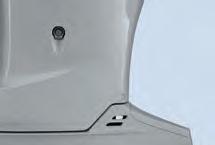








The 2023 CCA Florida STAR competition presented by Yamaha will o er more opportunities to win than ever before. is 100-day, summer-long competition begins Saturday of Memorial Day weekend and invites CCA members, non-members, anglers and non-anglers to take a shot at winning their share of prizes valued at more than $500,000 including boats, motors, electronics, tackle, scholarships and more. e winning begins even before the competition does with the early registration package providing a complimentary ra e ticket to win a Hewes Red sher, a 25 percent discount from TH Marine and free access to the Red sh Mastery course from Salt Strong.

But it’s not just about anglers winning but the shery too. Not only can participants become winners, they become citizen biologists and citizen garbologists by submitting photos of their catch or garbage collected during the competition in the STAR app. In order to win, participants must take their entry photo on the 2023 CCA FL STAR
O cial Measuring device which can be picked up for free a er May 20 in any West Marine store or one of the many other STAR distribution locations throughout Florida.
e competition has a division for everyone, from the non-angler to the experienced angler. It is comprised of 15 divisions targeting 12 inshore and o shore species plus the Costa Kick Plastic Trash Division presented by Papa’s Pilar, which encourages cleanup of trash from Florida’s coastal waters.
STAR’s signature Tagged Red sh Division o ers seven winners, ve adults and two youth, the choice of a Contender Boats 22 Sport, Path nder Boats 2200 TRS, and STAR would like to welcome back Carolina Ski o ering the 162 JLS. STAR has additional new Tagged Red sh sponsors with Dek Kat Boats o ering a 27 Flatz Kat and Sea Doo
and Can-Am o ering a fun package of a Sea Doo FishPro Trophy and the Can-Am Defender. Each boat will be powered by a Yamaha. Be the rst winning tagged red sh angler for your choice of all these packages as your prize.
Once again in 2023, an ALTA SUPER STAR tagged red sh is swimming Florida waters. If it is recaptured, the winner will receive $50,000 cash! For the rst two youth anglers who win in this division, prizes include a tiller boat powered with a Yamaha outboard, a trailer, a Minn Kota trolling motor and Humminbird electronics.
Each coastal county will have, on average, four tagged red sh for a total of over 160 prizewinning sh. e best opportunity to catch one of this year’s tagged red sh will be in Citrus and Charlotte Counties, STAR’s 2023 Destination Counties, which each have eight tagged red sh in their coastal waters.
For the o shore anglers, the Tigress Outriggers and Gear Tagged Dolphin Division o ers one winner a $10,000 cash prize. e rst STAR registrant and CCA Florida member who catches one of the tagged dolphin will win. Twenty dolphin (Mahi Mahi) will be tagged and released for STAR in the Lower Keys.
STAR is a family-friendly competition, and CCA Florida youth members (ages 6 to 17) can participate for free. Kids are encouraged to submit entries in the Youth Scholarship Division presented by Realtree Fishing for an opportunity to win one of twelve scholarships totaling $100,000. To date, the Florida STAR competition has awarded $800,000 in scholarships to youth from all over the state. Another great component of STAR for youth participants is they can earn 30 minutes of community service for every 5-gallon bucket of trash they pick up from Florida’s coastal waters and submit via the STAR app.
Other divisions include the Power Pole
Conservation Division, Bona de Kayak Division and Ladies Division as well as the Yamaha Guides, which allows guides to participate when they are not on a charter for hire. Since most division winners are determined by a random drawing, it is not about catching the biggest sh; any size sh can win. Remember, every sh you catch between Saturday, Memorial Day weekend and Monday, Labor Day, o ers the CCA member who is registered in STAR the opportunity to win their share of nearly $500,000 in prizes and scholarships. But you can’t win If you are not registered.
Not only is the STAR competition a wonderful way for participants to win amazing prizes, it is a tool to gather catch data, it creates awareness for conservation, our sponsors and CCA Florida. Launched in 2015, the competition has set the bar for other shing tournaments to follow by implementing conservation-friendly alternatives such a catch-photo-release format and a trash division.
Florida STAR focuses on conservation with its technology-based, CPR format and dedicated smartphone app which promotes the proper handling of species and allows participants who are members of CCA and registered in the competition to upload photos of their catch or trash buckets in the STAR competition and be rewarded for their e orts. is eliminates the requirement that some traditional tournaments have to harvest or capture and transport sh to win. CCA Florida also provides access to the data collected from the app to other conservation organizations and universities to help educate the public on the importance of protecting Florida’s marine resources and for use in their studies on conservation, habitat and stock assessments.
For more information and to register, visit http://cca orida.org/event/star/.




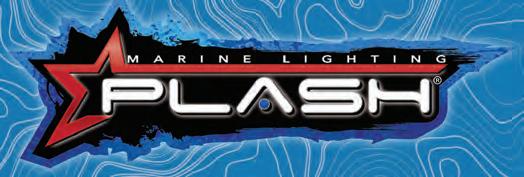






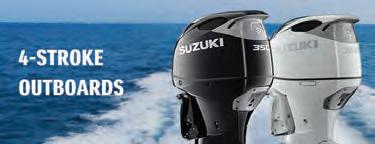
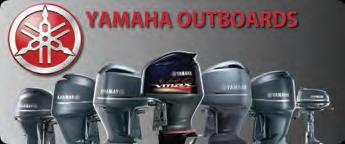








Ever since I started shing, the basics have stayed the same. If we all tell the truth, none of us started out catching gags and wahoo. It was probably more like bream, bass, cat sh and shad. Granted, we didn’t sh as many lures back then as we do now, but the basics are still the same. Back then, we shed a lot of the four or ve loop sherman’s knots for soaking baits. I no longer use these.
Now, I tell folks if you know how to make ve connections, you can go anywhere in freshwater or salt and sh for almost anything. ese ve connections are:
1) Loop knot
2) Snell
3) Uni knot (includes uni-to-uni knot)
4) Crimps(cable and uoro)
5) Double tackle loop
Granted, there are other helpful knots like the Piere knot, which is a good wind-on for connecting braid to Floro, but I’ll stick to my guns here and say these ve are the ones I use. ere are three of these I can tie in pitch black dark and have tremendous faith they’ll
never fail.
I can hear it now… “Yeah, you forgot this one and you need to know this one.” OK, but the title of the article is “getting back to basics,” and these ve work for everything I need to do. As soon as any of these
meat and potatoes of the freshwater, inshore and nearshore shing I do. I make connections from braided main lines to smaller uoro leader material with the uni-to-uni. e loop knot works best on most lures. e loop knot gives any lure the freedom it needs to swing or change directions freely.
e snell has a place for freshwater, inshore, nearshore and o shore. is is simply because I feel the snell is a requirement for all circle hooks, in my humble opinion.


e crimps make for ease of heavy-duty connections from uoro leaders to swivels and then to braided main lines. e crimps also make heavy-duty cable connection to stinger hooks and to arti cial lures.



ve starts failing on me, I’ll consider something else, but between now and then, these work for everything from bream to bill sh. e loop knot and uni knot make up the


I’ve got some videos on my website on how to tie and utilize these ve connections. Some of these videos have some age on them, and I have received some request to make new ones with better lighting, backgrounds, etc. I may very well update them in the near future. However, all these videos show the knots in pretty good closeup detail. Stay in touch with my you tube channel and website for these new videos.
See more from Tim Barefoot at Barefootcatsandtackle.com.


The Sport shing Championship held its inaugural event, e Catch, in mid-April and it sprinkled teams of top local captains with well-known NFL players for o shore action out of Miami.

NFL players at the event included stars like Justin Herbert (QB, L.A. Chargers), A.J. Brown (WR, Phi. Eagles), Dalvin Cook (RB, Minn. Vikings), DeAndre Hopkins (WR, Ariz. Cardinals), Chris Jones (DE, K.C. Chiefs), Matthew Judon (OLB, N.E. Patriots), Patrick Surtain II (CB, Den. Broncos) and Quinnen Williams (DT, N.Y. Jets).
e football players were split into groups
 By Astrid DeGruchy
By Astrid DeGruchy
to sh with renowned captains aboard powerful sport shers and be challenged in ways they may never have experienced before.



e event was broadcasted live from the Fontainebleau in Miami. Spectators were able to tune in and follow the hook-ups in real-time as NFL superstars got tight, reeling in species like black n tuna, sail sh, yellowtail snappers, bonitas, mahi and more.

rough the tournament, the players learned that catching these sh is no simple task, and that it requires a unique set of skills to hook and successfully reel them in. e experience gave

them a newfound level of respect for anglers and, for many, sparked a newfound interest in shing. e competition was close, but Team Gypsea, led by Capt. Taylor Sanford and supported by fourtime Pro Bowlers Matthew Judon and Dalvin Cook, claimed the championship trophy. e grand prize winnings consisted of a $100,000 donation to the Coast Guard Foundation.
“It was fascinating to watch elite NFL athletes realize how much e ort it takes to reel in saltwater sh,” said Je Stillwell, president of Salt Life. “ eir willingness to learn about techniques and take a genuine interest in doing things correctly shows why they are top-tier athletes. Plus, there is nothing like seeing someone catch a sh for the rst time!”
SFC’s e Catch had various components, including a pro-am tournament with other NFL legends and athletes. e Awards dinner was incredible, featuring a breathtaking drone light show and a Havana-themed atmosphere.
For more, visit sport shingchampionship.com. Follow Astrid Degruchy’s shing adventures on Instagram @catching_astrid.
















Welcome to summertime in Southwest Florida! It has actually been a crazy spring season due to the hurricane Ian we dealt with last year as it seems every time we experience a major storm our fishery takes a big hit. However, mother nature is very resilient and seems to bounce back stronger than ever. Over the last couple of weeks, we have had some of the best tarpon fishing I have experienced in a few years. Also, our snook bite has

been incredible. I believe this has to do with the fact that the State of Florida has kept our fishery closed in our area. We have had a run in with red tide, however, this is not about bringing up bad memories. I like to bring up awareness that our fishery is very fragile one and needs to be preserved for future generations. Over the years as a full-time fishing guide, I have seen the decline and would like for all the new anglers that have moved, or are planning to move to our beautiful area, to experience the same fishery that I grew up to love.
With the warming waters our pelagic fishery has been getting fired up. The spanish mackerel have been doing very well around the glass minnow schools. Speaking of glass minnows, this year has been a banner year for those guys. Fun fact for those that don't know, glass minnows are actually an anchovy, therefore, the next time you have anchovies on the side of your pizza, well, they are glass minnows! The snapper should start showing up very well. Look for my column next month, those guys are going to be the main topic.

Hello fellow anglers! In Southwest Florida this time of year you may be able to catch an inshore Grand Slam which is a snook, red, trout, and a tarpon. Or if you don't get the tarpon, it still is an inshore slam, snook, red, and trout. The first step in trying to accomplish this feat is having the proper bait. Last month we talked about the greenbacks and catching plenty of these baits and keeping them alive. The snook should be allover they are on the move for the spawning process. Yes, they migrate from their home waters to areas that are higher in salinity so they can reproduce. Those that live in the rivers migrate out to places in the harbors and estuaries. Those that live in those areas migrate to the beaches and nearshore reefs. Then you can find reds along the edges of the rivers and estuaries around docks and small creeks. And out on the grass flats in anywhere from two to four feet of water you may find those speckled trout looking to ambush an unsuspecting bait. When you get that accomplished, it would be time to decide if you want to start your hunt for the silver king. You may find them along the beaches or near the passes in search for food. They come to our area to feed and then go offshore to spawn. You may even find them up into the estuaries searching for anything to feed on. And please, check the FWC regulations before you try to harvest one of these species, the rules change often so don't get caught with illegal fish. And make sure you get pix of your catch for your brag book! If you don't have a boat, give me a call or email me, and I’ll take you out and get hooked up. Also, if you are new to our area and have your own boat and some fishing gear, we can take your boat and I’ll show you how to use some of the gear you already have and some great locations to fish in. I call these training sessions where we go on your boat with one of your fishing buddies, this way we can share information about our area and where your boat will work. After 50 years of navigating these waters, I am a wealth of information that I’m willing to share on your next fishing adventure. And always remember singing drags and tight lines make me smile!






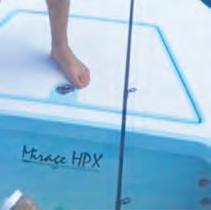 By: Caitlyn Gatrell
By: Caitlyn Gatrell


Have you ever fought a Jack Crevalle before? If you have, then you know they put up some challenging fights and are strong swimmers. Now, have you ever fought one in a current? If so, then you know that’s a tough battle. One that will have your arms burning and your wrist hurting.






E xploring our way through the Ten Thousand Islands, we have found a couple “honey holes” where the fishing produces pretty well. A couple spots happen to be near some backwater currents. Here, we often find a variety of species, even turtles, dolphins, the occasional gator, you name it. Jacks are often found here as well, whether it be within mangroves, out in shallow waters, along a small island, or within the deep ripping currents. On especially the strongest point of the tide, where the water forcefully pushes leaves and twigs past us, and our trolling motor can barely keep up with the current, the jack hook ups are usually very memorable. We don’t see them at first, but we already can tell what is on the line, and the line will fly through the water, the drag screams and the fish just takes off. It seems within a few seconds the fish is already halfway down the stretch of mangroves. It takes a bit of time, teamwork, and a lot of maneuvering around with the trolling motor, in order to get these jacks to the boat. Just when you feel like you are getting them close, they get a kick of energy and will take off again, swimming quickly with the current. Once we can get them up, we take out the hook, snap some quick photos and get ready for the release. Jacks usually are ready to go with a quick head dive and they scurry off, swimming deeper until you can no longer see them.
We can find jacks of all sizes in the currents, but big or small, they always put up a good battle. Jacks in these currents often are eating (dead or alive) mullet, pilchards, and even swimbaits as well. We usually have no problem catching them. One thing I notice about these jacks, is that we frequently spot them swimming along the surface of the water. Not enough for their fins or back to surface, but enough to make a big wake appear. There have been quite a few times where we would see one of these big wakes and would throw our bait in the direction its heading, and sure enough, we would immediately hook up to one of these big boys. As mentioned before, Jack Crevalles are the saltwater species that got me hooked into fishing, so I will always enjoy reeling them in. If you haven’t had an opportunity to catch a jack in the current, or a jack at all, it is something you need to experience! Head to your local beach, bridge, pier, jetty, bay, etc., and wait for the strong outgoing or incoming tide, and get ready for some fun!

June is a great month for fishing the Gulf Coast both inshore and offshore species here in SW Florida’s Gulf of Mexico. I like the ‘inshore’ for redfish, snook and seatrout and ‘offshore’, for groupers and snappers. June tides bring lots of bait, strong currents and daily opportunities to catch all inshore species. Offshore does the same but will require longer runs for larger fish as the water temperatures rise.


June is a month to consider targeting your ‘fish of a lifetime’ or a species on your bucket list that have avoided your hook, or you have not taken the time to put forth the effort to target and catch. Trust ‘yours truly’; age is not the obstacle! I witness both young and old become good at fishing and catching. The way to be successful is to get out there and work at it. Charter Captain’s (like myself) call this effort, ‘time on the water’.
Tarpon are still here in big numbers but it will be the last month this year for the opportunities to catch a big migratory fish. They will be headed north on their annual journey before diverting back down to their winter destinations in areas such as Mexico. They will not return this way until around next April.
Big snook are in the passes and just off the beaches. The points with current and deeper current cuts in the passes will most likely prove to be more productive, especially if they have additional structure such as trees, stumps and rocks. Don’t overlook docks and railroad truss bridges. Other good snook areas are along the mangroves.
Redfish will be found on incoming tides under the docks along the passes and points of islands. They will hold up in potholes off the grass and sand flats on low tides and move to the mangrove islands with the incoming tide to follow mullet that expose oyster clusters in the sand and around the mangroves. These oyster clusters are home to small crabs and shrimps that redfish like to eat.
Seatrout will be throughout in about 3-5ft. of water over the grass flats. They will be plentiful as will the lady fish and catfish. FWC recently opened seatrout harvest to 3 per person or no more than a total of 6 per vessel. All must be a minimum of 15”-19” with only one fish over 19” in the aggregate total.
Reef and Pelagic species are abundant in our waters. Winds permitting, longer offshore runs of 30-40 miles out in deeper water of 100 to 130 feet may prove to be a worthwhile endeavor providing harvest of yellowtail, mangrove, lane, vermillion snappers together with a variety of other species such as black, gag, red grouper, african pompano, co-
bia and red snapper. Be knowledgeable of the harvesting restrictions on each and every species. Reefs in shallower water will provide action as well but may not be as productive for larger fish. However, it is a much easier and safer venue. When fishing offshore, be sure to take more chum than beer. Remember this motto: ‘When you out of chum, you out of business!
June is also a great month for fishing the Atlantic and fortunately, the east coast is close enough for SW Floridian Anglers to enjoy as well. While both the Gulf and Atlantic offer the same species, the east coast is different with deep reefs and lots of Pelagic species within a reasonable distance from a ‘Port of Call’. I love every opportunity to change things up by fishing for mahi, tuna, wahoo, sailfish, which are not as readily available in the gulf waters. Of all of the Atlantic locations, I still prefer the ‘Keys’ for the beauty of the water replicating island life, of the Bahamas and the Caribbean.
It has been three (3) years now since 1st Mate Vicki and I fished the waters of the Florida Straits. As many of my friends and clients know, I am available as ‘Captain for Hire’ on other vessels to provide instructions. This year we are accompanying our good client and friend, Ron and Lucinda Defreitas, aboard their new 36’ Yellowfin to fish for mahi, mahi, wahoo, tuna, yellowtail snapper, grouper and a variety of other pelagic and reef species. June is a big migration month for mahi.

Our plan is to depart Ft. Myers Beach early in the morning on July 1 and arrive a few hours later at Key West. We have arranged for luxury accommodations at the Ocean Reef Resort which is equipped with a full-service marina. Wind and conditions permitting, our goal is to fish hard for three (3) days and then head out to the Marquesas to celebrate The 4th of July, relaxing and basking in the beautiful blue waters of the Florida Straits. We will stake out tents on one of the many sand bars, enjoying barbeque, snacks and drinks. We hope to return on the July 5th so to be back in Cape Coral to run charter requests. I am looking forward to helping Captain Ron ‘break-in’ that new boat of his!
Every year I look forward to the summer months when I can enjoy fishing the Atlantic. My favorite trips are when I am accompanied by my Chocolate Lab, ‘Moby Dick’. Unfortunately, he will not be making the above Key West run during the 4th of July Holiday.


 By: Dan Carns
By: Dan Carns
Irecently spent a week fishing in a location that can only be described as one of the best saltwater kayak fishing destinations in all of Florida! Jutting out into the Gulf of Mexico, just north of Tampa is the remote little town of Cedar Key. Known for its quaint, laid-back old-world Florida vibe, the town is surrounded by extremely shallow bays and inlets. As you travel around town low tide reveals enormous oyster covered bars and shoals. Of course, the shallow waters of the Gulf are home to many sought after fish including snook, spotted sea trout and my favorite, redfish. Only experienced boaters dare to enter these shallow waters whereas kayakers can easily maneuver around the skinny drop-offs and channels that never quite dry out at low tide. Local fishing reports including those right here in the Coastal Angler Magazine, said that redfish and trout were active but snook were still holed up deep in the canals as winter is ending.

A fter consulting with a member of the new Florida Kayak Bass Trail (FKBT), he suggested that I launch just north of town at Shell Mound boat ramp but beware to go at low tide so that I could tell where the channels were and would be best on the incoming tide.

A rmed with my ten-foot Zambezi peddle drive kayak from Vanhunks and all my inshore fishing gear, I set out about two hours before low tide and headed northeast to inside Long Cabbage Island. The first two hours produced not a single bite but many spooked fish as it was so shallow and quite that even a soft plastic lure was too much for them to tolerate. The turning tide took a long time to reach my spot but gave me plenty of time to explore all the little oyster bars and grass covered humps that define this cove. Slowly, at first the water began to come in and I saw this little exposed oyster bar get covered by water, then I heard my first blowup followed by another. Suddenly fish where crushing bait in every direction when to my delight, I hooked into a monster snook. I hooked this fish on a Zmann paddle tail in pin fish color paired with a red Bass Assassin jig head and was surprised as I thought it was a shark at first. She launched into the air revealing that long black lateral stripe that defines a snook and after a long, I had it measured and released. Over slot at 34 inches and my PB snook! My next cast produced a 30-inch redfish followed by another tremendous 32-inch snook and for one straight hour it was continuous fishing mayhem producing slot and over slot reds and snook. I repeated this same amazing trip three days in a row and will remember this as some of the best kayak fishing of my entire life. It’s A Wild World-Get Out There!
Fishman Dan @paddlinandfishin | gulfcoastkayak.com |239-283-1125









Shortly after Hurricane Ian devastated our coast, many paddlers were asking how they could help with the cleanup effort. We were initially asked to stay safe and be patient. Waiting sure was hard though. As more marinas, parks, and launches opened and barges began removing boats, cars and other large debris from the water, the opportunities to help cleanup increased. Now that we are past the sixmonth Ian landfall date, there seem to be cleanup paddles scheduled every other week.
The 2023 Great American Cleanup by Keep Lee County Beautiful Inc. was held April 1 with several cleanup sites located throughout Lee County. I was with a small-but-determined group that partnered with Kayak Excursions and the Getaway Marina. We picked through the Pelican Bay mangroves for a couple hours and amassed a pile of debris large enough to fill a dumpster. Afterward, everyone went out for some social time. It was great to meet other paddlers and exchange stories. Carmen’s Kayaks hosted a cleanup of Calusa Island in Bokeelia on April 16. A fleet of paddlers attacked the debris on the island managed by the Calusa Land Trust. Afterward, we returned to Knights Landing where there was live music and a food truck, which was fun for all. I’m looking forward to going out with the Kayak Club of Greater Char-
lotte Harbor to work on the Orange River again. This club is very active and is continuously out on the water doing cleanups.

If you would like to meet other paddlers in the area, help the marine environment, and have a lot of fun, I highly suggest joining in on a cleanup such as the ones listed above. Most of these events can be found on social media. The Calusa Blueway, Keep Lee County Beautiful, and SWFL Paddle Club’s Facebook pages are good places to look. To join the Kayak Club of Greater Charlotte Harbor on the water, you’ll need to join their meetup group. Joining meetup groups is where you’ll find most clubs; it’s easy to do and it’s free. Following our outfitters on social media is another great way to keep updated.


The opportunities to join other paddlers and help our waterways are out there if you look for them. We’d be happy to have you join us.
A big thank you to all the volunteers, clubs, outfitters, non-profits, marinas, local businesses, and municipalities working together to cleanup the Calusa Blueway and Lee County waterways. Your efforts are much appreciated.






Many of the snowbirds have left, the traffic has lightened up, and the fish are biting! This is undoubtedly one of my favorite times of the year, as it transitions into some of the best fishing that our area has to offer. Whether you’re looking for snook on the beaches, permit on the wrecks, or tarpon up and down our coasts, Springtime has it all!

The backwater fishing has remained steady. The mangroves have been producing plenty of snook, redfish, big jacks and mangrove snapper. Look for bait on the beaches in the morning. There have been large schools of bait up and down the coasts. The bait schools are mixed, consisting of threads, pilchards, blue runners, and more. For backwater, I prefer to use pilchards, and luckily, they are usually relatively close to shore. Once
you’ve loaded up your live well, look for fish in moving water along the mangrove shorelines. Oyster bars, creek mouths and other structure will also hold fish.
The beaches are also incredibly active right now. Up and down the coast you can catch snook as they cruise the shallow waters. First thing in the morning is usually the best time of day to try and catch beach snook. Remember, once you sight them remember to lead them and to present a bait moving away from the fish. Prey never runs towards a predator, so a bait reeled directly at your intended target is guaranteed to spook them. In addition to snook, there are a ton of sharks in the shallow coast waters. Anywhere from 5-20 foot of water is loaded with them. We have been catching all kinds including blacktips, spinners, hammerheads, bulls and even tigers. Large, fresh baits that are resistant to scavengers like catfish and smaller sharks work best. Look for areas that have a large amount of activity going on, i.e., birds diving into bait schools, and target sharks there.
And as always, the star of the show has showed up! Tarpon are here! There are tarpon up and down the coast right now, from Boca Grande all the way to Marco Island. We have been getting them using either thread fins or crabs, depending on what they are in the mood for that day. For leader, 50–60 lb. fluorocarbon is my go-to, with a 5/0 Mustad demon circle hook. Most of the fish have been staying below the surface, but you will see an occasional school rolling on the surface. Seeing that giant silver flash definitely gets your heart pumping!
Fishing is great right now and will only continue to get better as we move into summer! Get out your gear and get out on the water and catch your fish of a lifetime!
SAWFISH NEWS by
Tonya Wiley, Havenworth Coastal Conservation
There’s a new way to show off your love of endangered sawfishes and support their conservation! These beautiful handmade sawfish earrings are only $20 per pair (+$3 shipping). And thanks to the incredible generosity of Country Fried Crafts, $6 from each pair sold goes to the Sawfish Conservation Society!


To order email melissa.giresi@gmail.com. Choose mahogany or poplar wood, and gold or silver hardware.
Country Fried Crafts, based in Key West, Florida, is a woman-owned small business creating custom designed wooden jewelry. Proceeds will go to support the Sawfish Conservation Society’s (SCS) mission to connect the world to advance global sawfish education, research, and conservation! Visit https://www.sawfishconservationsociety.org/ to learn more about SCS and other ways you can get involved to help save sawfishes from extinction.

Joe, what presentation do you prefer when you are fishing? That question comes up quite often when I’m talking to fellow anglers. Through the years, I have condensed my lure selections and presentations. I have found that keeping things simple can be an advantage when on the water. Preferring to power fish, covering water and making long casts, doesn’t really require multiple lures or drastically different presentations. My confidence with a jig and paddle tail or swimbait is very high. It is a very complimentary presentation while power fishing. The key to success is keeping the lure moving. I have found a steady retrieve after a long cast allows me to cover large areas with a lure that stays in the strike zone longer. Basically, after the cast simply lower the rod tip and start retrieving the lure so that it stays just above the bottom structure like grass. Obviously, conditions play a role in the presentation. Depending on depth, current, wind and structure choose a lure that will work best for each condition. The weight of the lure is usually the key. In light current, shallower water, hard structure and grass, lighter lures work best. Heavy current and deeper water require a heavier presentation. I have found a steady retrieve works very well with a spoon and steady retrieve and light twitches work very well with a weedless Jerk Shad. I use an occasional plug like a wake bait or suspending twitch bait and the steady presentation works very well. I think back to when I moved down here a few years ago catching redfish was a challenge. I couldn’t figure it out and was very frustrated. One day, sticking with a jig and paddle tail and a steady retrieve, I caught a couple. Since that day, I have had great confidence catching redfish, snook, trout and other species. There are times when fast erratic presentations are needed or slow deliberate action while working your lure on the bottom will be productive. If power fishing is your game, then using a simple presentation that allows you to cover water is very effective. Good luck and keep casting.

ALL NEW CONSTRUCTION BUILT TO TODAY’S MODERN STANDARDS

Elevated Concrete Block Impact Doors and Windows Metal Roof
5 BED 5 BATH * 3,219 SqFt
Standard Luxury Finishes include Cambria

Stone Quartz, Coretec Luxury Flooring, Travertine Entry Way, and Hand Thrown Pool
Pavers Price Includes Dock, Pool, and Landscaping
STARTING AT $3,650,000

For more information, contact Lisa Baez GRI, Executive Stakeholder / Agent

c. 818.231.8690
o. 305.735.4682












Let’s grow with Florida together.









Confessions of a Fishaholic, by Thatch Maguire, is a hilarious and irreverent look at one man’s quest to catch fish in spite of life’s annoying interferences. You’ll travel with this awkward adventurer as he risks home and health to pursue his passion for fishing...regardless of the consequences. Anglers of all expertise levels will immediately identify with why his addiction is incurable. This book defines the blurred line between passion and obsession.



Catch a 30-pound ve- sh sack of bass, and you’re pretty much a lock to win whatever tournament you’re shing, right?

Imagine that glorious moment when you’ve been culling 5-pounders and pull into the docks to unload your livewell. With a grin on your face, you haul that huge bag of sh up to the scales…only to nd out your 30-pound sack barely put you in the top 20! at was the reality at a May 6 Roland Martin Marine Center Bass Series event on Lake Okeechobee. e shing was so good that anglers weighed 20 ve-bass limits that were heavier than 30 pounds. It took 36.82 pounds to win. We’re not sure who keeps track of such things, but that’s more 30-pound sacks in one tournament than we’ve ever heard of.


A father-son team of Preston and 11-year-old Tavyn Heisler won the 177-team tournament and a $6,500 big check.

“It was an amazing day,” Preston told a RMMCBS reporter a er the tournament. “I’m still shaking and I couldn’t ask for anything better.”

Tavyn said he was the net man early in the tournament, but he caught his own 8-pounder late in the day. His favorite lure was a black and blue charterbait.
To read a full report on the event, visit: rolandmartinmarinecenterseries.com.

Maguire’s frst work is a compelling, fast read. His style is like a mix of Hemingway with a sardonic blend of Hunter S. Thompson. I couldn’t put it down...
Ben Martin
Editor in Chief Coastal Angler Magazine





Florida’s red snapper season will be 70 days long in 2023 and include both summer and fall dates. In early May, Gov. Ron DeSantis announced what he called the longest combined season since the state took control of red snapper management. e summer season will be 46 days, followed by a 24-day falls snapper season.
“Florida is the Fishing Capital of the World, and the Gulf red snapper season brings anglers from across the country to enjoy our waters,” said Gov. DeSantis. “It is a generational tradition for so many who call Florida home. I am happy that 2023 will be by far the longest combined season since the state assumed management of red snapper.”

e 46-day summer season will begin on June 16 and run through July 31. e 24-day fall season will include all weekends in October and November, Friday–Sunday.
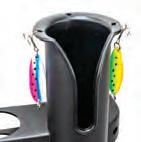



If you plan to sh for red snapper in state or federal waters from a private recreational vessel, even if you are exempt from shing license requirements, you must sign up as a State Reef Fish Angler (annual renewal required). For more information, see GoOutdoorsFlorida.com.


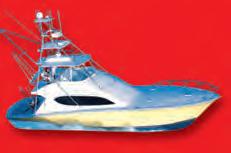

















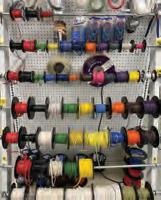

For all science knows about our sheries, there is plenty le to discover. Bone sh & Tarpon Trust scientists recently located a bone sh prespawning aggregation (PSA) in the Florida Keys. e discovery is the rst of its kind in Florida waters and the culmination of a years-long search that utilized acoustic telemetry and the historical knowledge of veteran shing guides.
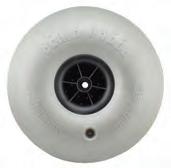
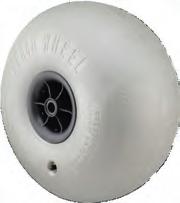
“ is is a major discovery for the Florida Keys shery,” said BTT President and CEO Jim McDu e. “BTT has previously identi ed PSAs in several other countries, but Florida sites remained elusive—until now. By locating this PSA, our scientists will be able to learn more about where and how bone sh spawn in the Florida Keys, which is information critical to the sustained recovery of the population.”

Over the course of the 2022-2023 bone sh spawning season, which spans from October to April, BTT Florida Keys Initiative Manager Dr. Ross Boucek and his team tracked 67 sh and logged more than 94,000 detections. Many of these detections were in the area where BTT research during the 2021-2022 season and reports from shing guides indicated a likely PSA. Fourteen bone sh detected at the suspected PSA site had been tagged at distant ats, including two sh tagged 55 miles away.

e newly discovered PSA is comprised of approximately 2,000 to 5,000 sh and located three to four miles o shore along a reef. Previously documented PSAs in the Bahamas and Belize are located in nearshore waters.


At the site, BTT scientists also observed bone sh gulping air at the surface. Previous research shows that bone sh engage in this behavior before spawning to ll their swim bladders. At night, the sh dive hundreds of feet and rapidly ascend to the surface. e sudden change in pressure during the ascent makes their swim bladders expand, enabling the bone sh to release eggs and sperm. A er fertilization, hatched larvae dri in ocean currents before settling in shallow sand- or mud-bottom bays, where they develop into juvenile bone sh.
“As a Keys shing guide for 53 years, with a science background, I took bone sh for granted—they were what I shed for every day,” said Capt. Rick Ruo , member of the BTT Board of Directors. “I thought that I knew all about the resource, until the population crashed. I discovered neither I, nor anyone else, knew where or how bone sh spawned—a major gap in our knowledge. BTT has come up with the amazing science to determine the dynamics of bone sh spawning. It has been a great lesson to me that we have located this missing piece of the puzzle. To have a healthy population and management goals, you have to understand all aspects of your resource. I am so proud to be part of the BTT science e ort that has unraveled these bone sh mysteries and will witness their rebound.”

Lasting 2-3 times longer than wooden, concrete, and aluminum docks, our modular foating system is the preferred dock choice for residential, commercial, marina, liesure, and other applications. Customizable and confgurable for boat docks, liesure and recreation docks, and drive-on jet ski and personal watercraft!


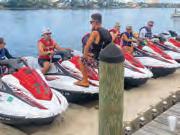
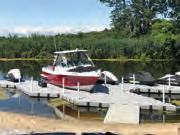

•High-quality plastic
•Environmentally-friendly

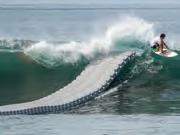
•Guaranteed for 20 years
•Near-zero maintenance
•Completely customizable

•UV and pollution resistant

www.candockcf.com
























Loop knots leave a small loop of line rather than a knot snug against the hook eye. ey are important to have in your repertoire for shing arti cials because that loop allows a little more movement when you’re working lures like jigs, topwaters and plugs.

e Kreh knot, developed by legendary y sherman Le y Kreh, was originally intended to be used for streamers and bait sh ies. It is also a great choice for conventional anglers throwing any lure that needs a touch of freedom to strut its stu Also known as the non-slip loop knot, it is strong and easy to tie, and it works well with both mono lament and uorocarbon lines.
With the Kreh knot, you give up a bit of strength in comparison to snug Palomar or uni knots, but you’re trading it for lifelike lure action. e
venerable Rapala knot is another great loop knot that might be a little stronger than the Kreh. However, the Kreh is a tad easier to tie, making it our go-to loop knot for lures in freshwater or salt.
For more shing tips and tricks, visit usangler.com.


Nestled on six lush tropical acres of pristine waterfront directly on the Indian River Lagoon, take a step back in time to experience the very best of Old Florida charm with modern conveniences and services to make your stay truly memorable and unforgettable.
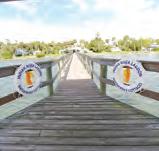


• FULLY FURNISHED 3 ROOM COTTAGES WITH FULLY EQUIPPED KITCHENS



Kingfsh Lodge includes a wide screenTV and bar for small gatherings Sailfsh House features a wide covered wrap-around porch for larger groups
• Boat Trailer Parking on site w/ Water and Power
• 250 Foot Dock w/ Covered Area
• FREE Ice / FREE Guest Dockage
• Cable TV, Hi-Speed Internet


• 2 miles to the Ft. Pierce Inlet
• 12 miles to the Gulf Stream

• Laundry, BBQ Grilles and FREE use of our Kayaks




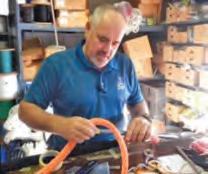
Timothy Crowley was shing Kenansville Lake with Capt. Morris Campbell on March 23 when he caught this 13.10-pound lunker.
Orange Lake keeps pumping out giant largemouth bass. e latest leader in Florida’s TrophyCatch program is a 14-pound, 1-ounce monster from Orange Lake. Chad Dorland caught the sh on April 23 to claim the top spot in FWC’s big-bass recognition program.

Dorland’s sh is the third 13-plus-pounder to come from the 12,550acre Alachua County lake since February. On Feb. 3, Luke Matthews caught a 13-pound, 8-ounce bass at Orange Lake. Anthony Holland caught a 13-pound, 3-ounce beast at Orange Lake on Feb. 25.
Fish weighing more than 13 pounds are awarded Hall of Fame status in the TrophyCatch program. Five Hall of Fame sh have been caught since TrophyCatch season 11 began on Oct. 1, 2022. ree of the ve were caught at Orange Lake, which has also seen 13 other bass weighing more than 10 pounds submitted to the program in that same time period. ose statistics don’t even include all the other lunkers anglers have likely caught and not entered into the program. It’s safe to say Orange Lake is a big-bass factory at the moment.
e other two 13-plus-pound TrophyCatch entries this year were both caught in March. On March 4, Russell Bauknight caught a 13-pound, 8-ounce hawg at Holden’s Pond, which is just up the road from Orange Lake in the same sprawling system of shallow, vegetation- lled waters southeast of Gainesville. On March 23, Timothy Crowley caught a 13-pound, 10-ounce sh that gave him the top spot in TrophyCatch before Dorland caught his 14-pounder. Crowley’s sh came from Kenansville Reservoir down in Indian River County.
For more information, visit www.trophycatch orida.com.







Hand closes Aug. 6, allowing harvest to begin during the weekend in advance of the Fourth of July holiday.
“Extending the season will increase the economic bene ts from this popular recreational shery to local communities in the region,” said Jessica McCawley, Division of Marine Fisheries Management Director. We will continue these e orts by exploring long-term season options for future years via the formal rulemaking process.”

Between 2017 and 2020, FWC took a pilot approach to establish regionally speci c bay scallop regulations while also maintaining the sustainability of local scallop populations. As part of this e ort, the allowable harvest area for scallops was extended to include Pasco County waters starting in 2018. e Pasco Zone for bay scallop management includes all Florida waters south of the Pasco-Hernando county line and north of the Anclote Key Lighthouse, approximately 0.37 miles south of the Pasco-Pinellas county line.



e daily bag limit in this area is 2 gallons of whole bay scallops in the shell or 1 pint of shucked bay scallop meat per person, with no more than a total of 10 gallons of whole bay scallops in the shell or 1/2 gallon (4 pints) shucked bay scallop meat per vessel.


For more information, go to MyFWC.com.












For anglers looking to conquer the toughest offshore conditions, Okuma’s Cavalla 2-Speed Lever Drag reels are the ultimate weapon of choice. Over the past decade, Okuma has cemented its position as a leader in the saltwater market, starting with the groundbreaking Makaira line of reels. Today, the Cavalla 2-Speed Lever Drag is yet another example of Okuma’s unwavering commitment to providing top-tier, reliable products for saltwater anglers.
With its compact, machined aluminum frame and side plates, the Cavalla is a reel that can withstand the toughest conditions Mother Nature can throw at it. The rigid one-piece frame ensures stability and durability, while the cold-forged, type-II anodized machined aluminum spool adds to the reel’s sleek, rugged design. Whether you’re targeting monster grouper, sailfish, giant snapper or other offshore saltwater species, the Cavalla is the reel you want in your offshore arsenal.
The Cavalla reels feature a battle-proven carbonite drag system with Cal’s drag grease that can put out an impressive 24 to 34 pounds of drag at full. The 17.4 grade stainless steel main and pinion gear, along with the CRC coating process, make this reel virtually corrosion resistant. With four corrosion-resistant stainless-steel bearings and a silent retrieve system, the Cavalla operates
smoothly and efficiently, ensuring that you never miss a catch.
Okuma’s Cavalla
2-speed reels feature a 6.4:1 and 3.8:1 gear ratio on the 5 size reels and a 4.7:1 and 2.1:1 gear ratio on the 12 size, allowing for versatile performance across a range of fishing styles. The 5 and 12 size reels come in both left- and right-hand retrieve and feature an on/off bait clicker. The reel’s compact size and comfortable Ergo Grip handle knob and anodized aluminum handle arm make it easy to handle and use for extended periods of time.
So, why should you choose the Cavalla lever drag reel for your next offshore fishing trip? Here are five reasons:

• Durable Construction: The Cavalla’s machined aluminum frame and side plates, along with its corrosion-resistant components, ensure that this reel can handle the toughest offshore conditions with ease.
• Versatile Performance: With its 2-speed capabilities and variable gear ratios, the Cavalla is a reel that can adapt to a range of fishing styles and conditions.
• Smooth Operation: Thanks to its silent

the Cavalla operates smoothly and efficiently, ensuring that you never miss a catch.
• Strong Drag System: The Cavalla’s carbonite drag system with Cal’s drag grease can put out up to 34 pounds of drag, making it a reel that can handle the biggest and toughest fish in the ocean.
• Comfortable Handling: With its compact size and Ergo Grip handle knob and anodized aluminum handle arm, the Cavalla is a reel that you can use comfortably for extended periods of time, even during the toughest offshore fishing trips.
The Okuma Cavalla 2-Speed Lever Drag reel is an all-around, top-of-the-line reel that every saltwater angler should have in their arsenal.
For distributors and retailers, Okuma Fishing Tackle Corporation will be available to meet at ICAST 2023 in Orlando, Fla. July 11-13 at Exhibit Hall Booths 1202 and 1308.

It’s Kingfish Time! The 43rd annual 121 Financial Credit Union Greater Jacksonville Kingfish Tournament is slated for July 17-22, 2023. For five days, with four tournaments and $400,000 in prizes, the “Grandaddy of all Kingfish Tournaments” will keep the docks buzzing with fun events for everyone from die-hard anglers to casual spectators.

The cornerstone of this historic and thriving event is the general tournament, which launches Friday, July 21 with a boat package valued at $160,000 going to the team that lands the largest kingfish. The grand prize is a sweet 25-T Contender with twin 150hp Yamahas, a custom T-top by Custom Marine and an Ameritrail trailer. The tournament pays through 20 places for largest fish and aggregate, as well as a Lady Angler division that pays to 10 places, totaling nearly $250,000 in cash and prizes.

All the boats and the fish coming into the docks at Jim King Park and Boat Ramp at Sisters Creek Park in Jacksonville creates a festival atmosphere. Traditionally, the tournament draws thousands of spectators who enjoy cold beverages, hot food and vendors at the Liar’s Tent. Awards Day on Saturday, July 22 is all about celebration, with Kids Zone activities, drawings and a fishing seminar, followed by eye-popping fireworks in partnership with the City of Jacksonville.
Also for the kids, there is a Junior Angler Offshore Tournament on Wednesday, July 19, as well as a Junior Angler Dock Tournament. The grand prize in the Junior Angler Offshore Tournament is an Ohana 14’ skiff with a 25hp Yamaha and trailer, and this tournament pays through 25 places.
popular Redfish Tournament fishes on Saturday, July 22, with weigh-ins at 2 p.m. during the Awards Day activities.

Through its history, the Greater Jacksonville Kingfish Tournament has been all about putting on a great tournament and helping to provide access to marine resources and promoting education, preservation and research in partnership with its junior anglers and Jacksonville University’s Marine Biology Department. Jacksonville Marine Charities is the operating arm of the event, and it supports non-profits throughout the state. Recently, Child Cancer Fund, the Down Syndrome Association and the Child Guidance Center have benefitted from the organization, which also supports other local charity fishing events like The Premier Trout, Flounder Pounder, Wounded Heroes on the Water and others.
For complete details, go to https://kingfishtournament.com/.
Coastal Angler and The Angler Magazine, Suzuki Marine and Sea Eagle have come together to offer readers a shot at this Sea Eagle FishSkiff 16 paired with a Suzuki DF4 outboard that’ll take you wherever the fish are. The FishSkiff 16 is an inflatable fishing boat that is lightweight, sturdy, stable and extremely packable. It rolls up small enough to fit in the trunk of a car and quickly inflates into a fishing machine. Powered by Suzuki’s four-stroke DF4A, you’ll have to hold on to your hat as you scream over the flats. Designed for efficiency and performance and portability, the DF4A provides all the speed and acceleration you can handle. It’s lightweight and can be attached or removed with ease.


Breakdowns are unpredictable, make them less stressful with an Unlimited Towing Membership from TowBoatU.S. You can relax, we’ve got your back.
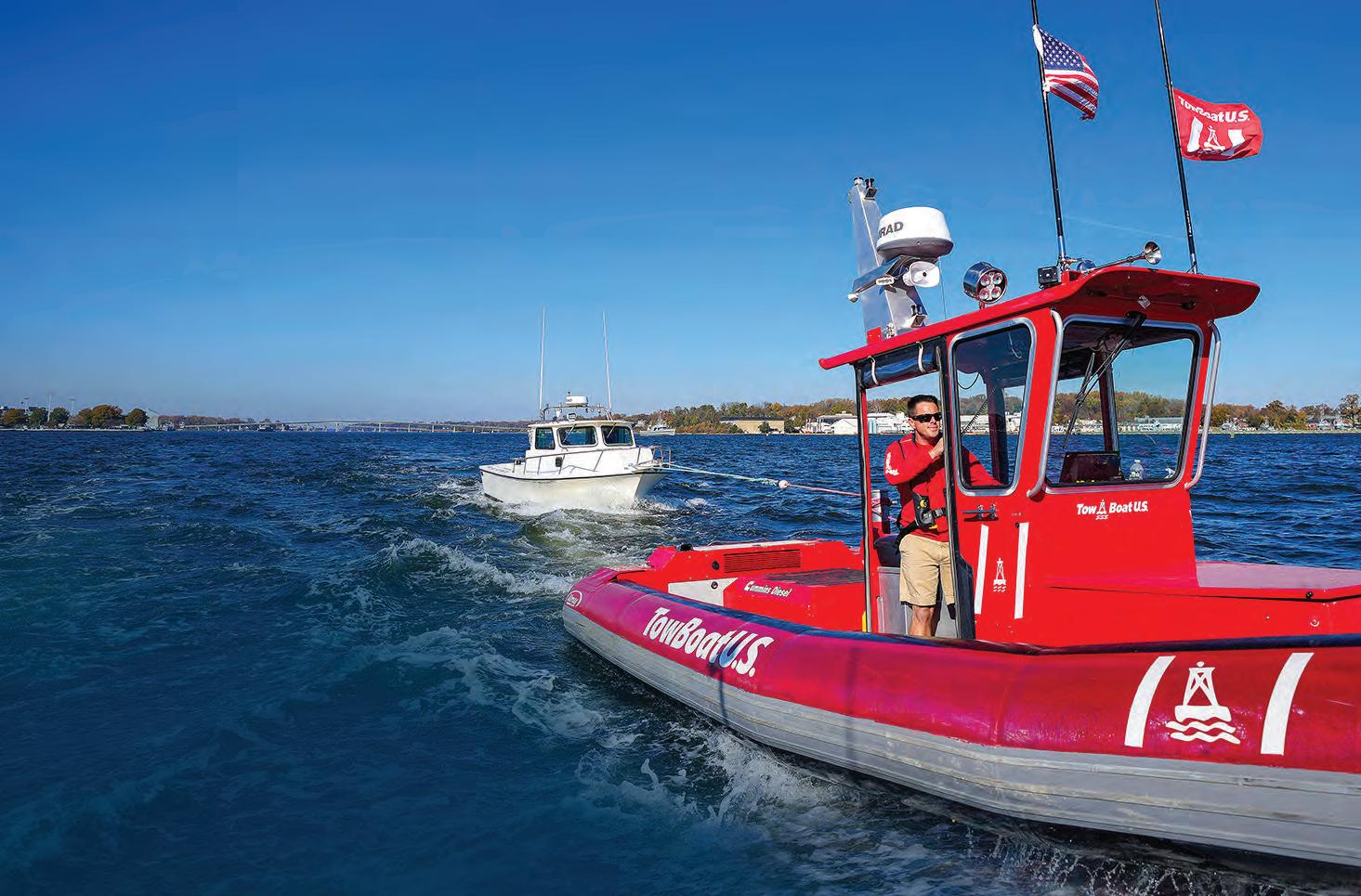
This is the time of year when bass gorge themselves on bluegill. One of the best ways to catch bluegilleaters is with a swim jig.
The swim jig is a versatile bait. It can be used in different colors and actions that drive bass crazy. All the variety can make jig shopping a bit overwhelming. There are thousands of color options, countless styles, different hooks and line-tie variations. When I’m looking for the perfect swim jig, I keep a few things in mind. I only throw two different color combinations, bluegill duplicators— the greens, browns and oranges—and a black and blue. You want a jig with a slender head style with a vertical line tie that will come through the cover you’re fishing. I also like a jig with a stout hook. Throwing a swim jig around heavy cover calls for heavy line, and you don’t want your hook to bend out or break when you hook into a big one.
Selection of jig trailers can also be overwhelming. Guess what? I only throw two different styles of trailers. I usually put a swimbait-style trailer with a boot tail on the back, but occasionally I’ll use a craw trailer with two kicker legs. At the end of the day, you just want something back there kicking
and giving your jig some action, and these two styles are my go-to. I match the color of the trailers to the color of the jig.
The cover to target with a swim jig can be endless. They are great in vegetation as well as around docks, wood, rocky banks and for covering water over expansive flats with wood and grass. You can cover a lot of water with this bait, and typically covering more water leads to more bites. You should throw it anywhere bass are chasing bluegills or where bass are actively feeding. I always keep one tied on and ready.
A retrieve I find myself using a lot is a yo-yo retrieve. Point the rod tip high and vary the retrieval speed by either cranking fast and slow or moving the rod tip. This gives the bait some erratic movements and drives them crazy. I also use a steady retrieve. Depending on the part of the water column you are trying to target, you can reel the bait fast and keep it up high—even on the surface—or slow it down and creep it deeper, maybe to keep it around some submerged cover.
Fishing cover requires heavier equipment. I fish a heavy action rod with a length between a 7’3” and 7’6”. The 13 Fishing Defy Black 7’5H is a super affordable rod and is awesome for the job. Pair the rod up with a fast reel like the 13 Fishing Concept A 7:5 spooled up with 50-pound Seaguar Smackdown braid, and you are ready to put some fish in the boat.

Tyler Woolcott is a professional tournament angler and guide. Check out his website at www.tylerwoolcottfishing.com.
















































The super sleek, super stable inflatable FishSkiff™ 16 now features a patented drop-stitch outside keel for precise steering and better open sea motoring performance! Due to the new ultra-light, ultra-strong fusion technology that bonds two layers of reinforced PVC together the FishSkiff™ is super tough and super stable. Great for 1, 2 or 3 anglers.


Whether you use a gas or electric motor, the in atable FishSki ™16 will get you to the sh. Add a canopy for protection from the sun or rain. Add a solar panel for perpetual power that can keep your electric motor battery charged; whether your camping, live on the water or just love the idea of solar power.
With the NEW drop-stitch keel, you’ll have less course correction and improved performance. The low gunwales give you superb access to the water for landing sh, releasing sh, and getting on & o the boat.




















In early May, a 600-plus-pound bluefin tuna was brought to the docks at Alabama’s Orange Beach Marina. It was not a world or state record, but it was a giant fish and a first for Capt. Johnny Greene who has been a charter captain for the last 33 years.

According to the story written by David Rainer for the Alabama Department of Conservation and Natural Resources (ADCNR), Greene and his crew aboard the Intimidator were hosting a group of anglers from Georgia on a three-day trip deep into the Gulf of Mexico. Greene said he has encountered big bluefins before in the April and May timeframe, when they arrive in the Gulf to spawn, but he’s never managed to put one in the boat or even “slow one down.”



“Last year we hooked one about noon and fought that fish four or five hours. We had 10 people on that charter, and they ended up changing the rod between anglers probably 20 or 25 times,” he told ADCNR. “We ended up breaking a rod after fighting him that long. We were so close, so that one was really a heartbreaker.”
This recent trip did not end in heartbreak. After hooking the fish, the Intimidator chased it for about 2 miles before getting to within 100
feet of the leader. Then the fish dove deep. They managed to stop the dive with a Shimano 50-wide and a stand-up harness, and after battling it for about four hours they could tell the fish had died. They began the laborious process of winching it up on 80-pound-test mono.



“When you have to pull a 600-pound animal up, it’s not the easiest thing to do,” he told ADCNR. “It requires communication between the angler, everybody in the cockpit and the wheelhouse. It’s basically a momentum game. You’ve got to get the fish coming up, and you have to keep him coming. If you take a break, the fish is going to start sinking again. It’s tricky.”


The celebration began when they finally brought the giant fish to the surface and tethered it with a tail rope. They used a come-along to hoist it into the boat.


Knowing their fish was not a record, the crew went ahead and gutted it and iced it down to preserve the meat during the ride home. It weighed 579 pounds gutted, with an estimated total weight of 625 pounds. The Alabama state record, caught in 2006, weighed 829 pounds.
To read David Rainer’s entire account of the catch, go to www.outdooralabama.com.
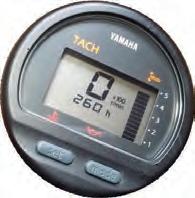




believe the popping cork found its beginnings in the 1930s, and it’s still a mainstay in most saltwater anglers’ tackle boxes. Many versions have been introduced along the way and undoubtedly more will come. One thing is for certain, if they didn’t work, they would not have lasted for nearly a century. In Texas, a popping cork typically finds itself dragging a live shrimp, but there are other options. What makes the popping cork stand out is the cupped top, which creates a popping sound and splashes water forward when twitched. It simulates a fish feeding on the surface.


I was once no different than the masses tossing live shrimp under a cork, but in the early 2000s— when I had already turned my focus to exclusively lure fishing—I found another place for the simple but effective popping cork.
At that time, our famous Baffin Bay was plagued with brown tide, an algae bloom that turns the water, well, brown. The water had nearly zero visibility, which made fishing soft plastics difficult at best. Looking back, I wish I had already invented my Knockin Tail Lures with the built in tail rattle, but better late than never. At the time, I started using lures under a cork instead of live shrimp. I realized a noticeable increase in the number of fish I was able to catch. Depending on the circumstances, I would use a jighead, a weighted weedless hook or an unweighted hook about 24 inches under my cork. Although I heard
a lot of grief from my buddies who would not touch a popping cork, it worked and I continued to out fish them on most trips. I stayed with this technique in Baffin until the brown tide cleared.
A lure under a cork is also a great way to introduce kids to lure fishing. Paddletails, twitch baits and artificial shrimp all work well with this strategy. The method takes a lot of the hand coordination out of the picture for children and lets them realize that you don’t need live bait to catch fish.

Another of the many options this cork gives the angler is a way to effectively fish jetties. At times, trout will suspend 8 to 10 feet deep off the rocks. In this situation, the popping cork’s sound creating ability is still important, but it needs to be modified. Casting a cork with 10 feet of leader to get your lure down to the fish creates a challenge. This is where the slip cork method comes into play. With a slip cork, you can cast a 2- or 3-foot leader or less, but the cork will have a rubber stop that allows your bait to sink to the desired depth where the bite is. Look up slip cork for more on this method.
The weather is warm, don’t forget to take a kid fishing!
To some, sunglasses are a fashion accessory…
Drivers’ Alert: Driving can expose you to more dangerous glare than any sunny day at the beach can… do you know how to protect yourself?
Thesun rises and sets at peak travel periods, during the early morning and afternoon rush hours and many drivers find themselves temporarily blinded while driving directly into the glare of the sun. Deadly accidents are regularly caused by such blinding glare with danger arising from reflected light off another vehicle, the pavement, or even from waxed and oily windshields that can make matters worse. Early morning dew can exacerbate this situation. Yet, motorists struggle on despite being blinded by the sun’s glare that can cause countless accidents every year. Not all sunglasses are created equal. Protecting your eyes is serious business. With all the fancy fashion frames out there it can be easy to overlook what really matters––the lenses. So we did our research and looked to the very best in optic innovation and technology. Sometimes it does take a rocket scientist. A NASA rocket scientist. Some ordinary sunglasses can obscure your vision by exposing your eyes to harmful UV rays, blue light, and reflective glare. They can also darken useful vision-enhancing light. But now, independent research conducted by scientists from NASA’s Jet Propulsion Laboratory has brought forth ground-breaking technology to help protect human eyesight from the harmful effects of solar radiation
Eagle Eyes®
Lens
more vivid and sharp. You’ll immediately notice that your eyes are more comfortable and relaxed and you’ll feel no need to squint. The scientifically designed sunglasses are not just fashion accessories—they are necessary to protect your eyes from those harmful rays produced by the sun during peak driving times.
light. This superior lens technology was first discovered when NASA scientists looked to nature for a means to superior eye protection— specifically, by studying the eyes of eagles, known for their extreme visual acuity. This discovery resulted in what is now known as Eagle Eyes
The Only Sunglass Technology Certified by the Space Foundation for UV and Blue-Light Eye Protection. features the most advanced eye protection technology ever created. The TriLenium Lens Technology offers triple-filter polarization to block 99.9% UVA and UVB— plus the added benefit of blue-light eye protection. Eagle Eyes® is the only optic technology that has earned official recognition from the Space Certification Program for this remarkable technology. Now, that’s proven science-based protection.
The finest optics: And buy one, get one FREE! Eagle Eyes® has the highest customer satisfaction of any item in our 20 year history. We are so excited for you to try the Eagle Eyes® breakthrough technology that we will give you a second pair of Eagle Eyes® Navigator™ Sunglasses FREE––a $59.95 value!
That’s two pairs to protect your eyes with the best technology available for less than the price of one pair of traditional sunglasses. You get a pair of Navigators with stainless steel black frames and the other with stainless steel gold, plus one hard zipper case and one micro-fiber drawstring cleaning pouch are included. Keep one pair in your pocket and one in your car. Your satisfaction is 100% guaranteed.
If you are not astounded with the Eagle Eyes® technology, enjoying clearer, sharper and more glare-free vision, simply return one pair within 30 days for a full refund of the purchase price. The other pair is yours to keep. No one else has such confidence in their optic technology.Don’t leave your eyes in the hands of fashion designers, entrust them to the best scientific minds on earth. Wear your Eagle Eyes® Navigators
Studies by the National Highway Traffic Safety Administration (NHTSA) show that most (74%) of the crashes occurred on clear, sunny days


Navigator™ Black Stainless Steel Sunglasses
Receive the Navigator™ Gold Sunglasses (a $59.95 value) FREE!



just for trying the Navigator™ Black
Navigator™ Gold Stainless Steel Sunglasses
Certified EAGLE EYES® was developed from original NASA Optic technology and was recently inducted into the Space Foundation Technology Hall of Fame.

Fit-ons available for $39 +S&H
Black or Tortoise-Shell design
with absolute confidence, knowing your eyes are protected with technology that was born in space for the human race.
Two Pairs of Eagle Eyes® Navigator™
Sunglasses $119.90†
Offer Code Price $49 + S&P Save $70.90
Offer includes one pair each Navigator™
Black and Navigator™ Gold Sunglasses
1-800-333-2045
Your Insider Offer Code: EEN957-06
You must use this insider offer code to get our special price.
14101 Southcross Drive W., Ste 155, Dept. EEN957-06 Burnsville, Minnesota 55337 www.stauer.com
the offer code versus the price on Stauer.com without your offer code.
If this potbellied 73.29-pound lake trout isn’t a new world record, it should be.

Scott Enloe and his son Hunter were fishing an undisclosed Colorado lake in early May when Scott hooked into the 47-inch-long monster on a 6-inch tube jig and 10-pound test. According to Free Range American, it took 13 tense minutes to fight the huge laker boat-side, and both men had to haul it over the side because their net was too small to land the fish.
The fish was full of eggs and had an incredible girth of 37 inches. After some photos and measurements, they released it to go lay those eggs and spread the genetics for obesity.
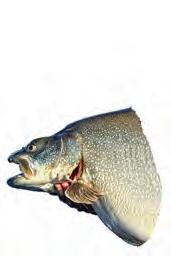
The IGFA all-tackle world record for lake trout weighed 72 pounds, even. It was caught in 1995 by Lloyd Bull at Great Bear Lake in Canada. With the strict procedures required by IGFA for record consideration, it is unlikely Enloe’s fish will break the all-tackle world record, but there is a chance the organization will consider it for a world length record.
The current Colorado state record weighed 50.35 pounds. It was caught by Donald Walker in 2007. We’re not sure about Colorado’s record submission requirements, but most states require a weight taken on certified scales.
Regardless, it is the fish of a lifetime for Enloe, and if it doesn’t qualify for a record… it should.
To read the full report from Free Range American, go to https:// freerangeamerican.us/world-record-lake-trout-enloe/
There’s no doubt these guys can get it out past the breakers. The Carolina Surf Casters Association gets together four times a year to hold distance-casting competitions. In an April contest, North Carolina’s Ryan Lambert set a record for the longest fishing cast in U.S. history. He launched a massive 889-foot, 4-inch cast.
Lambert is a frequent competitor in the sport of surf casting, known in Europe as long distance casting of sea weights, in which participants gather on a large marked field with surf fishing tackle to see who can cast different sizes of large sinkers (3.5 to 8 ounces) the farthest.
Though the sport originated in the U.S., reportedly as far back as the 1890s, it has become more popular in Europe and South America in recent decades. Only three surf casting clubs exist in the U.S. today. They are SurfCast USA (SCUSA), based in Maryland, Surf Fishing & Casting Club International (SFCCI), on Texas’ Gulf Coast, and Carolina Surf Casters Association (CSCA), in eastern North Carolina.
Lambert is the vice president/secretary of the CSCA – a more than 10-year-old organization with members from North Carolina, South Carolina, Delaware, Virginia, Maryland and Texas. The club organizes four competitions per year in spring and fall. These events are open to surf casters of all skill levels.
Lambert, a sales representative for a large agricultural supplier, lives in Angier, N.C., with his wife Blair and their two daughters. He’s an experienced saltwater fisherman who, like most competitive casters, originally developed long-distance casting skills to improve catch rate from piers and the beach. He learned those skills under the tutelage of fellow North Carolinian and long-time U.S. surf casting champion Tommy Farmer.
Tapping into his athleticism from playing baseball for N.C. State University, Lambert is able to generate huge power using a pendulum cast. This highly specialized technique involves swinging the sinker into an orbit around the tip of a long 12- to 14-foot surf rod, and at a precise moment, rotating the body and rod through a large arc, ending with a powerful punch-pull motion with the right and left arms.
“It’s great that one of our own from North Carolina—someone from our club, no less—was able to set this new benchmark,” said Matt Tuers, president of the CSCA. “One of the main objectives of this organization is to grow a community where U.S. casters can develop and start taking back the international records. Casters like Ryan are in a position to do that, as well as inspire the next batch of elite American competitors.”
The current world record longest cast is held by “Big Danny” Moeskops of Belgium with a 940 foot cast made in the early 2000s. The previous U.S. record was held by Will Nash of Texas, with 873 feet.
Check out CSCA at carolinasurfcasters.org.



Watauga River
Home of world class fishing on the beautiful Watauga Lake, rugged Doe River and designated trophy trout stream, Watauga River PLAN
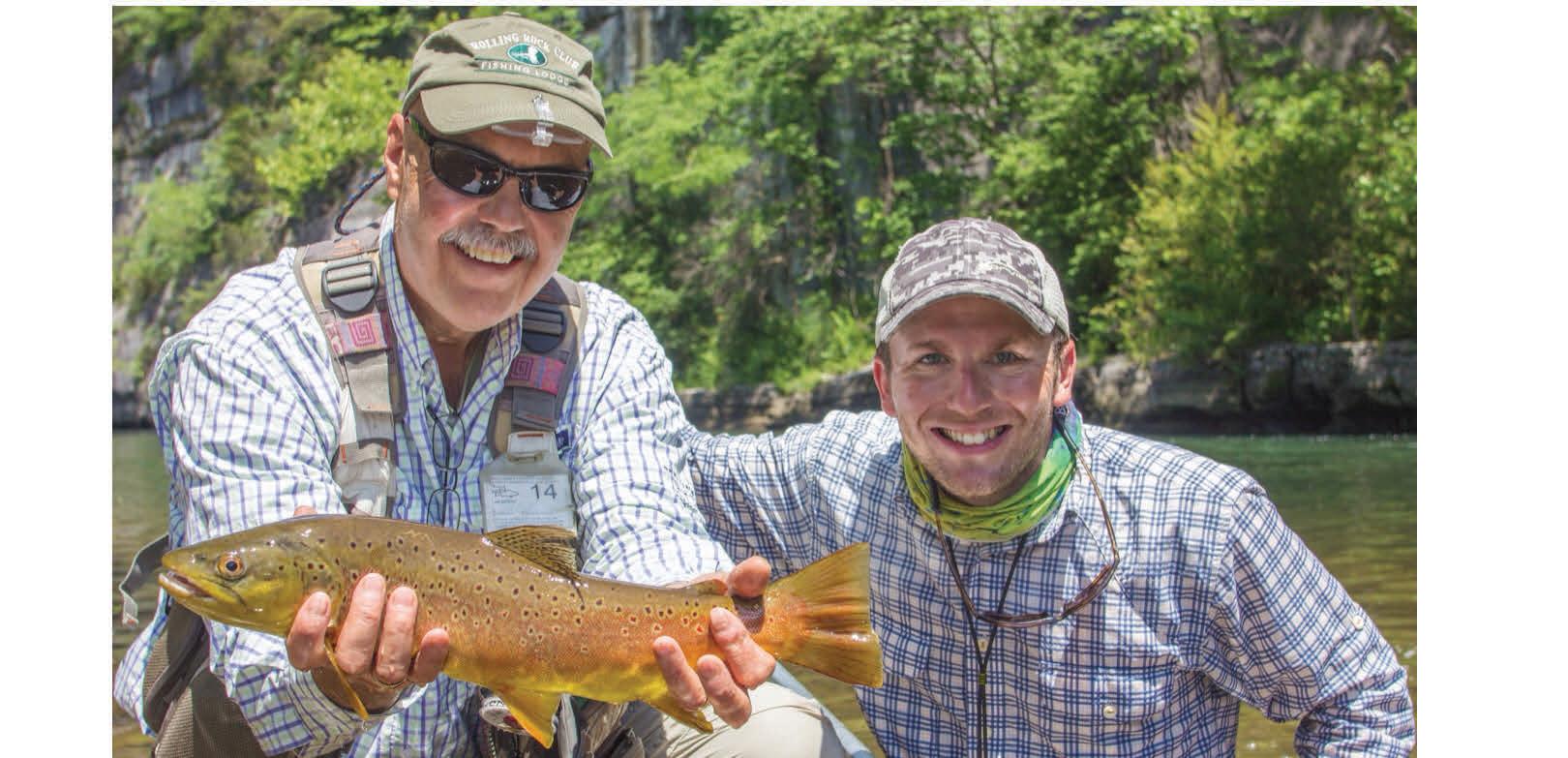

Watauga Lake
Doe River

